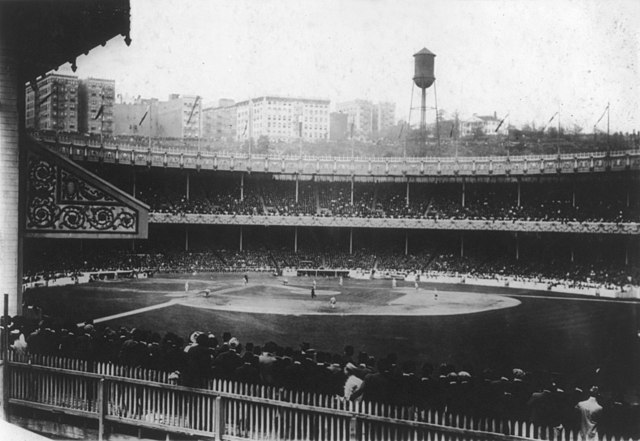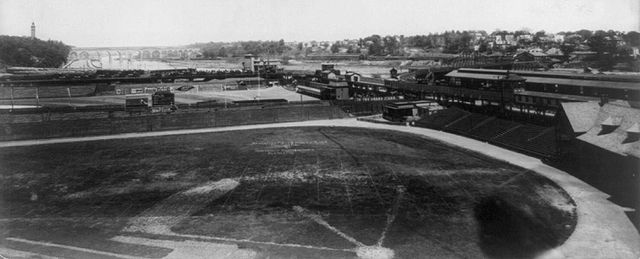The Polo Grounds was the name of three stadiums in Upper Manhattan, New York City, used mainly for professional baseball and American football from 1880 to 1963. The original Polo Grounds, opened in 1876 and demolished in 1889, was built for the sport of polo. Bound on the south and north by 110th and 112th streets and on the east and west by Fifth and Sixth (Lenox) avenues, just north of Central Park, it was converted to a baseball stadium when leased by the New York Metropolitans in 1880.
Polo Grounds IV during the 1913 World Series (New York Giants and Philadelphia Athletics) (below) Site of the original Polo Grounds, 1876–1888, between 110th and 112th Street, Manhattan
Earliest known image of Polo Grounds I, from 1882
Manhattan Field c. 1901 with Polo Grounds outfield in background. High Bridge crossing the Harlem River at about 173rd Street is in the background. The bridge's center spans over the river itself were replaced by a large single span in the 1920s. The tower on the left is Highbridge Water Tower
Fans on Coogan's Bluff watch the infamous Merkle's Boner game between the Giants and Cubs, September 23, 1908
Polo is a ball game that is played on horseback, a traditional field sport and one of the world's oldest known team sports. The game is played by two opposing teams with the objective of scoring using a long-handled wooden mallet to hit a small hard ball through the opposing team's goal. Each team has four mounted riders, and the game usually lasts one to two hours, divided into periods called chukkas or chukkers.
Players playing polo
A Persian miniature from the poem Guy-o Chawgân ("the Ball and the Polo-mallet") during the Safavid dynasty of Persia, showing courtiers on horseback playing polo, 1546 CE
Naqsh-e Jahan Square in Isfahan, Iran, is the site of a medieval royal polo field
Statue of polo player in Gilgit, Pakistan








